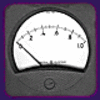Inaccurate Focusing M Lenses on the SL
-
Recently Browsing 0 members
- No registered users viewing this page.
-
Similar Content
-
- 7 replies
- 812 views
-
- 5 replies
- 637 views
-
- 2 replies
- 434 views
-
Thorium lenses 1 2
By Tragg,
- 27 replies
- 5,711 views
-
- 1 reply
- 146 views
-



Recommended Posts
Join the conversation
You can post now and register later. If you have an account, sign in now to post with your account.
Note: Your post will require moderator approval before it will be visible.